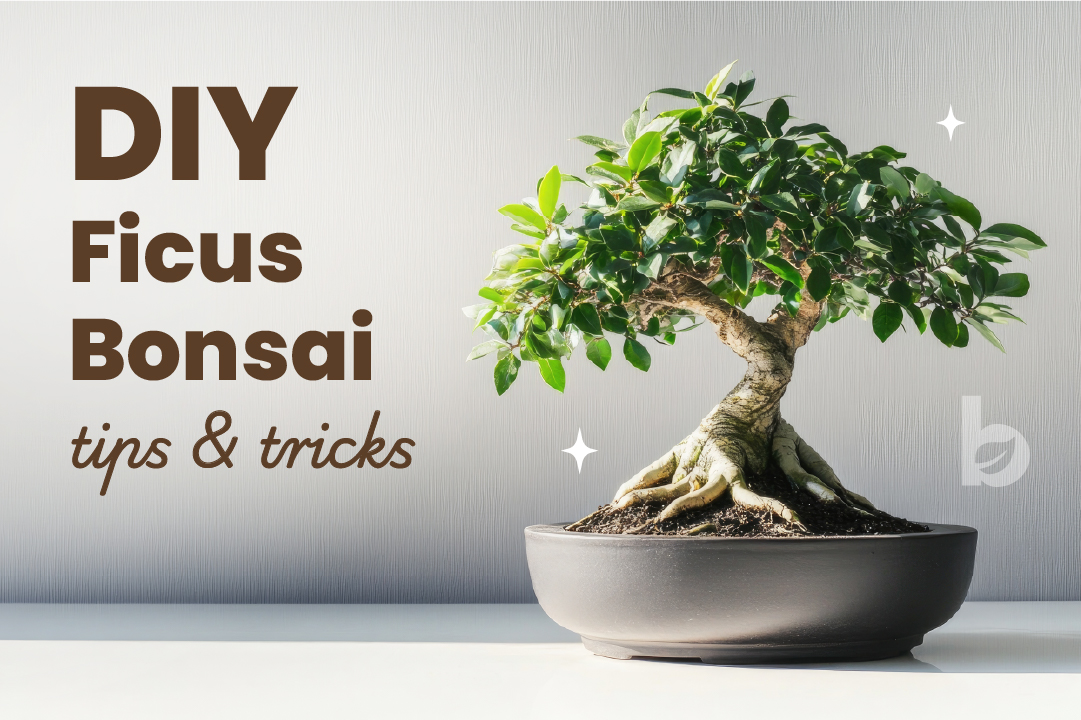
Have you ever admired the beauty of a ficus bonsai plant and wondered if you could grow one yourself? Good news—you absolutely can! Ficus bonsai trees are among the easiest and most rewarding bonsai to grow, making them perfect for beginners and seasoned enthusiasts alike. With their resilience, adaptability, and stunning aesthetics, they are a favorite among bonsai lovers worldwide.
This guide will take you through the step-by-step process of creating your own ficus bonsai plant, with expert tips. From selecting the right variety to pruning, wiring, and maintaining your bonsai, we’ll cover everything you need to know.
Why Choose a Ficus Bonsai Plant?
The ficus bonsai plant is an excellent choice for both beginners and experienced growers. Here’s why:
- Tolerant and Adaptable: Ficus bonsai trees can thrive in various indoor conditions, making them one of the most forgiving bonsai species.
- Thrives Indoors: Unlike many other bonsai trees, ficus bonsai adapts well to indoor environments.
- Fast Growth Rate: This allows for quicker shaping and pruning.
- Aerial Roots: Some ficus varieties develop stunning aerial roots, adding to their aesthetic appeal.
- Resilient to Pruning: Ficus trees can withstand aggressive pruning and still grow back vigorously.
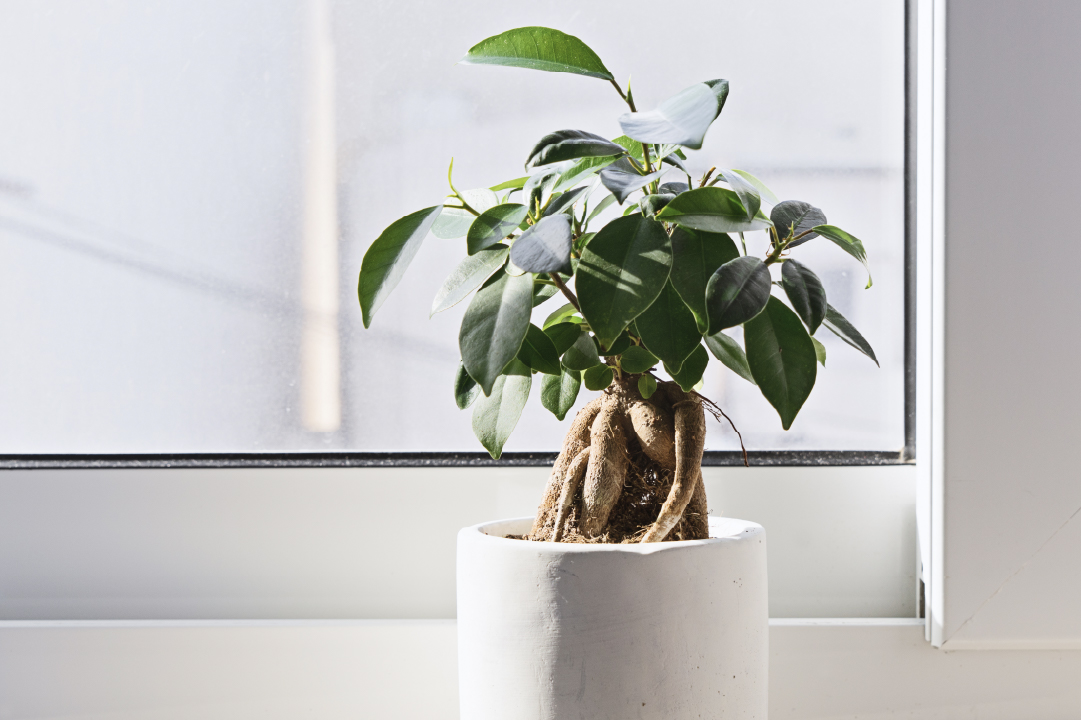
Choosing the Right Ficus Bonsai Variety
There are several species of ficus that work beautifully as bonsai. Here are some of the most popular ones:
1. Ficus Retusa (Ginseng Ficus)
- Recognized by its thick, bulbous trunk and small glossy leaves.
- Ideal for beginners due to its resilience.
2. Ficus Benjamina (Weeping Fig)
- Features delicate, drooping branches and small oval-shaped leaves.
- Requires regular pruning to maintain its shape.
3. Ficus Microcarpa
- Produces stunning aerial roots, giving it an exotic look.
- Thrives in humid conditions.
4. Ficus Religiosa (Sacred Fig)
- Recognized for its heart-shaped leaves with long tips.
- Holds cultural and spiritual significance in many traditions.
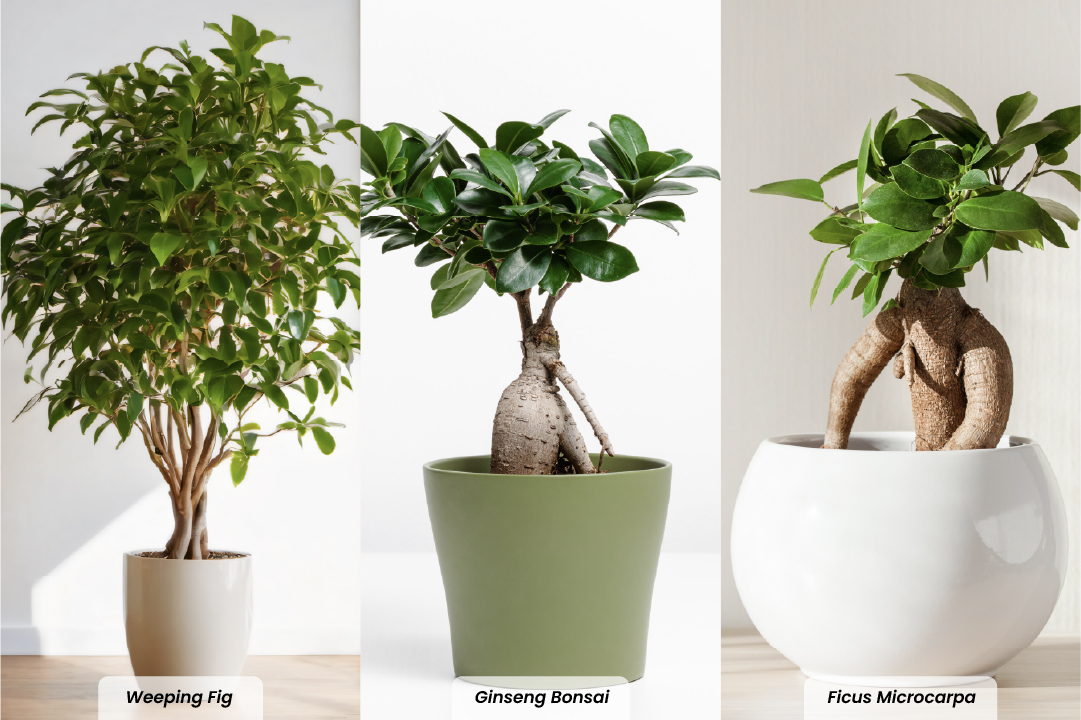
Step-by-Step Guide to Growing Your Own Ficus Bonsai Plant
1. Selecting the Right Pot and Soil
Your bonsai pot and soil mix play a crucial role in the health of your tree:
- Pot: Choose a shallow bonsai pot with proper drainage holes.
- Soil: Use a well-draining bonsai soil mix containing akadama, pumice, and organic compost.
2. Pruning and Shaping Your Bonsai
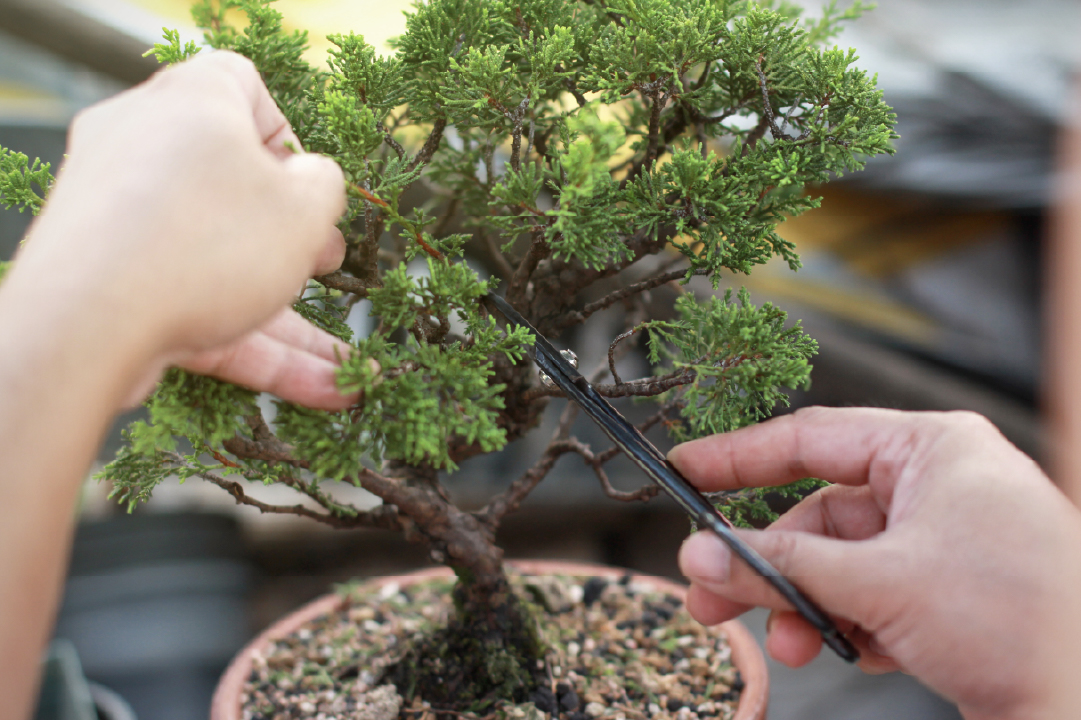
Pruning is what transforms a small tree into a work of art. Here’s how to do it:
- Structural Pruning: Remove large unwanted branches to establish a strong shape.
- Maintenance Pruning: Regularly trim new shoots to maintain compact foliage.
- Wiring: Use bonsai wire to carefully bend and shape branches into the desired form.
Pro Tip: Prune your ficus bonsai during spring and summer when it’s actively growing!
3. Watering and Fertilizing
- Watering: Keep the soil evenly moist but avoid overwatering. Let the top layer dry slightly between watering.
- Fertilizing: Use a balanced liquid bonsai fertilizer every 2-4 weeks during the growing season.
Pro Tip: If leaves turn yellow or start falling off, it could indicate overwatering or lack of nutrients.
Common Ficus Bonsai Challenges and How to Fix Them
- Yellowing Leaves – Usually caused by overwatering or sudden changes in environment. Adjust watering habits and ensure the tree gets enough light.
- Pests (Aphids, Spider Mites, Scale Insects) – Use neem oil or insecticidal soap to eliminate them.
- Weak Root Growth – Ensure proper soil aeration and avoid water stagnation.
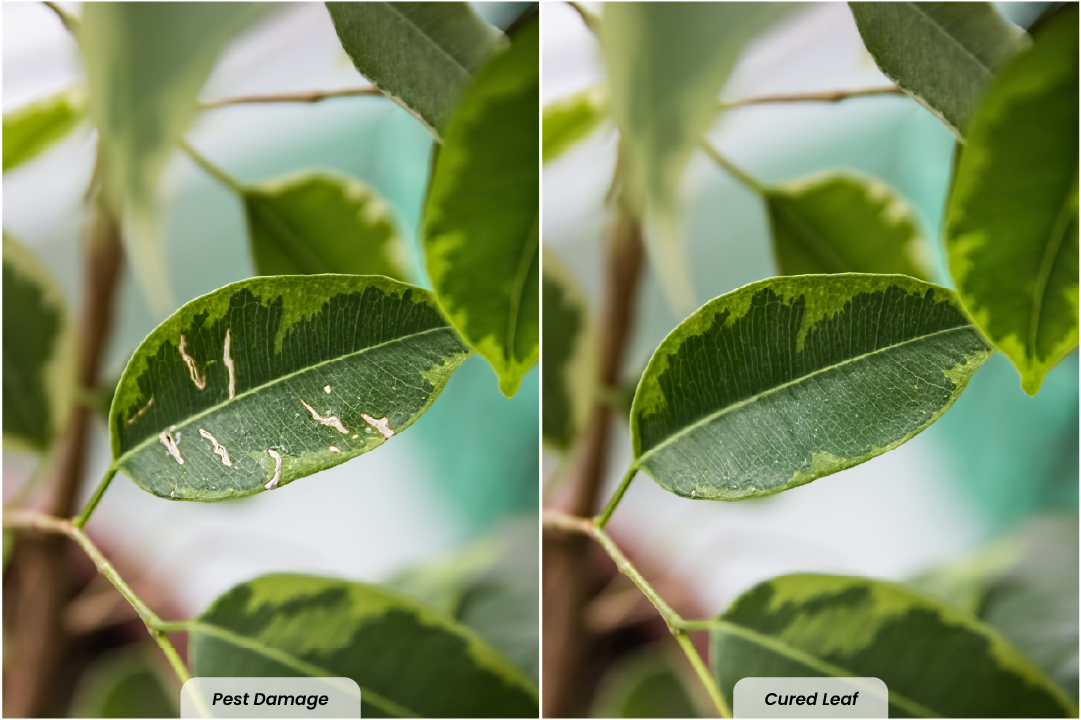
Final Thoughts
Creating a ficus bonsai plant is a rewarding experience that brings the beauty of nature into your home. With patience, proper care, and the right techniques, you can shape a stunning miniature tree that lasts for years!
So, are you ready to start your bonsai gardening journey? Bring home DeHaat Bageecha’s Ficus Bonsai. This stunning miniature tree is the perfect blend of beauty and simplicity, making it a fantastic choice for indoor gardening enthusiasts and decor lovers alike.
Whether you're looking to add a touch of greenery to your living room, workspace, or office desk, this elegant bonsai effortlessly elevates any setting. Its graceful structure and easy-care nature make it ideal for both beginners and seasoned plant enthusiasts. Bring home this exquisite bonsai and create a tranquil, green retreat wherever you place it!
FAQs
- How long does it take to grow a ficus bonsai plant?
A ficus bonsai typically takes between 3 to 5 years to develop a mature and aesthetically refined bonsai appearance. However, this depends on factors such as the species, environmental conditions, and how frequently it is pruned and trained. While initial shaping can begin within the first year, achieving the classic aged bonsai look requires patience, consistent pruning, and wiring. Using growth techniques such as regular repotting, root pruning, and fertilization can enhance the tree’s development over time. - Can I grow a ficus bonsai indoors?
Yes! The ficus bonsai is one of the best indoor bonsai options due to its adaptability. It thrives indoors as long as it receives bright, indirect sunlight for at least 6-8 hours a day. If natural light is insufficient, you can supplement it with grow lights to maintain healthy foliage. Additionally, ficus bonsai prefer a stable environment with consistent humidity levels, so placing it near a humidity tray or misting it occasionally can help prevent dryness. Avoid placing it near drafts, air conditioners, or heaters, as sudden temperature fluctuations can cause stress. - How do I thicken my ficus bonsai’s trunk?
Developing a thicker trunk is a gradual process that requires strategic growth techniques. One effective method is allowing the tree to grow freely without pruning for a period, enabling it to build girth. Another technique is sacrifice branching, where you let a branch grow longer and thicker, then prune it back later to stimulate trunk development. Additionally, trunk fusion—where multiple saplings are planted closely together and fused over time—can help achieve a thicker base. Proper nutrition, repotting, and soil aeration also contribute to healthy trunk expansion. - Why is my ficus bonsai losing leaves?
Leaf drop in ficus bonsai can be attributed to various environmental and care-related factors. Some common reasons include: - Sudden changes in light exposure (such as moving it from a bright area to a dim space)
- Inconsistent watering habits (either overwatering or underwatering)
- Temperature fluctuations (cold drafts, excessive heat, or placement near air vents)
- Pest infestations (such as spider mites or scale insects)
- Nutrient deficiencies (lack of essential minerals can weaken the plant)
- To prevent leaf drop, maintain a stable environment, ensure consistent watering, and provide balanced fertilization. If leaf loss persists, inspect the plant for pests or diseases and adjust care routines accordingly.



